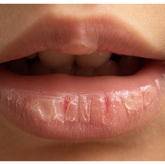
How to Reduce Dark Spots from Forming on Black and Brown Skin Due to Acne or Bug Bites

Many parents are concerned about their children’s skin and hair health, especially those with melanin-rich skin types. Your child may spend a lot of time outdoors playing and engaging in physical activities that leave them vulnerable to insect bites, and hormonal changes during puberty can lead to acne breakouts.
Due to higher pigmentation content, melanin-rich skin can show dark spots and hyperpigmentation, particularly on areas with blemishes like acne or bug bites. Melanin-rich skin has unique needs that require regular attention to prevent dark marks or irritation due to dryness.
Protecting your child's skin is best achieved by diligently practicing skincare for melanin-rich children with the help of natural, child-safe products.
Why Does Melanin Rich Skin Require Different Care?
Melanin is a pigment found in skin cells known as melanocytes, which produce melanosomes and absorb Ultraviolet (UV) rays to protect you from UV damage. The pigment cells in melanin-rich skin are more active and reactive than those found on lighter-skinned people. When there is trauma, such as acne or bug bites, these activating pigments get triggered by inflammation, causing patches to form around the affected area, contributing to skin conditions such as:
-
Post Inflammatory Hyperpigmentation (PIH)
Post-inflammatory hyperpigmentation (PIH) is common after an inflammatory wound, such as a pimple. Dark spots left behind are one example of this condition and can be treated with proper skincare for melanin-rich skin. Approximately 65% of African Americans suffer from PIH.
-
Melasma
Melasma is a skin condition where there are dark brown or grayish-brown patches on the areas around the face, like the chin and the forehead. Melasma is often caused by exposure to sunlight which stimulates the melanocytes to produce excess melanin.
-
Keloids
Keloids are abnormal, raised scars that form after an injury like a bug bite has healed. Some symptoms include discomfort, redness, and pigmentation. About 10% of people develop keloid scars in the United States.
-
Dyschromia
Dyschromia usually refers to changes in your skin color, such as an increase or a decrease in pigmentation. Dyschromia is a growing concern among many people, with over 24.7 million medical visits for dyschromia in the United States between 1993-2010.
Melanin-rich skin cells also have a higher lipid content, making you more susceptible to acne. Your skincare products should work to regulate sebum production to not only improve your skin but also prevent breakouts.
Prevent and Reduce the Appearance of Acne and Bug Bites on Your Child
People with melanin-rich skin can suffer from uneven skin tone resulting from bug bites and acne. Taking the following preventative measures with your child can prevent dark spots and other skin conditions from appearing.
Apply Sunscreen to Your Kids' Skin Everyday
Melanin allows your skin to tan easily, but tanning is a sign of sun damage. Although natural melanin-rich skin provides better protection against sun exposure than other skin types, there is always a risk of developing severe problems such as skin cancer.
People with melanin-rich skin may be less inclined to apply sunscreen because they don’t burn as easily. However, one blistering sunburn as a child can double the risk of having melanoma later in life, which is why practicing diligent skincare as a child is critical to long-term health.
A mineral sunscreen containing zinc oxide or titanium dioxide helps protect sensitive skin from burning or becoming darker in areas exposed to the sun. The American Academy of Dermatologists recommends using sunscreen with an SPF of 30 and higher and reapply it every two hours while outdoors.

Don't Let Your Kids Scratch Bug Bites
Sharp, small fingernails can irritate the skin around a bug bite, allowing bacteria to enter into the area and causing skin conditions such as dark spots to develop. You can teach your child that touching the area around their bug bites can make its appearance worse.
When a bug bite occurs on your child's skin, wash the area with mild soap and water and gently apply ice to reduce irritation. Treat the area as needed for pain relief using calamine lotion or hydrocortisone cream.
You can also use natural skincare for children to help with the healing process and fade dark spots. If the area develops signs of infection such as swelling or pus, it is best to see your child’s pediatrician for medical treatment.
Choose Skincare Products With Gentle IngredientsMany people of color have sensitive skin, which means they can experience side effects such as migraines and irritation from the chemicals found in most skincare products, such as fragrances. These can irritate sensitive skin or make them break out in acne that could lead to dark spots. You must look for gentle ingredients in your skincare products, such as shea butter and jojoba oil, that can provide melanin-rich skin nourishment.
Use Moisturizing Skin Care Products for All Your Skin’s Needs
Adding moisturizing skincare products to your skin can not only reduce hyperpigmentation but also helps to maintain an even skin tone. They can also reduce the excess production of melanin. Choose skincare products that include:
- Kojic acid
- Azelaic acid
- Glycolic acid
- Vitamin C
Keeping the skin well-moisturized can help lessen oil production, reducing instances of acne. Your teens’ natural skincare products must have ingredients made for their acne-prone skin, like safflower oil that can hydrate their skin and shea butter, which is excellent at healing scars.
Use Chemical Peels on Acne Scars
Having melanin-rich skin means your child’s skin produces more oil, leading to acne that may carry into adulthood if left untreated. To treat acne, use products containing ingredients like benzoyl peroxide and salicylic acid. Salicylic acid is an ingredient that can help clear clogged pores and prevent new breakouts.
Acne scars are a common issue for teens, but chemical peels can help them fade with time. Chemical peels are used to remove the outer layer of dead skin, allowing new cells to take their place and making your teenager's acne scars less visible. They help with acne scars and speed up the healing process from post-inflammatory hyperpigmentation.
Care for Your Child's Melanin-Rich Skin
Melanin-rich skin requires special care; your child needs to use the right skincare products to help control oil production and heal their skin if they are dealing with acne.
If your child is experiencing any severe skin conditions, you can refer to a dermatologist to answer your skin questions and provide the proper treatment for skin of color.
Your child can also practice skincare for melanin-rich skin with natural ingredients that meet all the unique needs of black or brown skin. Melabebe uses natural ingredients in our Protect product, so you know it’s safe for your child’s melanin-rich skin.
Kids can feel more confident about their appearance and complexion when using a product designed with black and brown skin types in mind.






